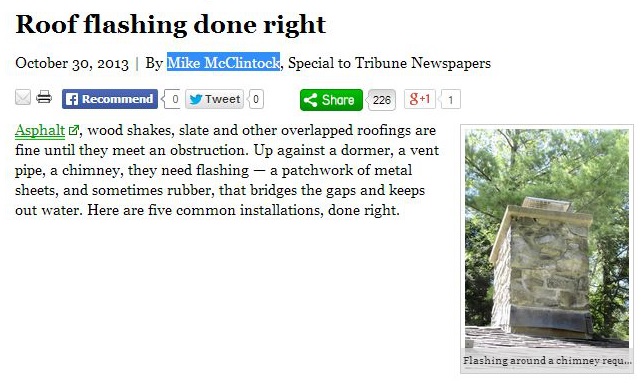A house’s roof has one major purpose, and that is to protect the home and all things inside safe from the weather. Among several harsh weather elements, the one that brings most damage is water. On areas where the roof meets other objects, such as a chimney or a vent pipe, roof flashing acts as the final line of defense against leaks.

Flashing protects joints in the building from water penetration. Intersections, mounted structures, and projections on the roof create a potential for a leak, so it is important to have proper flashing.
Palo Alto, CA roofing contractors can install different kinds of flashing. An article by Mike Mclintock discusses common flashing installations.
Step flashing “seals seams between a shingled roof and a vertical wall.” It is done with small rectangles of metal that are folded in a right angle so that one side goes through the shingles and the other, against the wall. Step flashing can be homemade or can be bought precut and pre-folded.
While caulking is used to seal the sides of windows and doors, window and door flashing allows waterproofing across the top of these installations. Flashing on these parts extends across the top of a window or a door and tucks over its edge.
Vent pipe flashing on older roofs are metal collars that go on pipes that protrude through the roof. For newer roofs, vent pipe flashing makes use of a flexible rubber gasket attached to the aluminum base sheet.
Roofers that perform roof repairs in Palo Alto can also weather proof your home with the right flashing. This can prevent emergency roof repairs and reduce the risk of a leak. Flashings are the most technical aspect of roofing in most cases and should only be entrusted to a roofing professional.
(Source: Roof Flashing Done Right, ChicagoTribune.com, Published 30 October, 2013)
